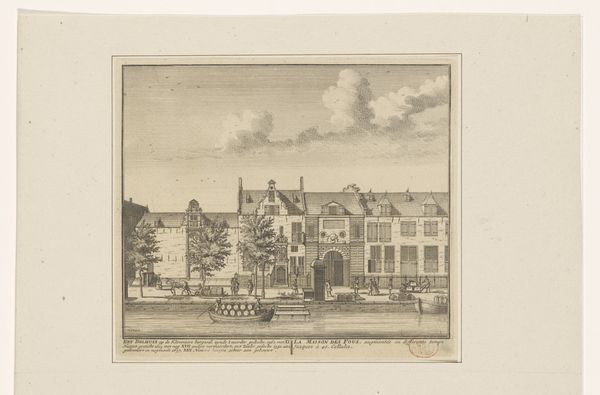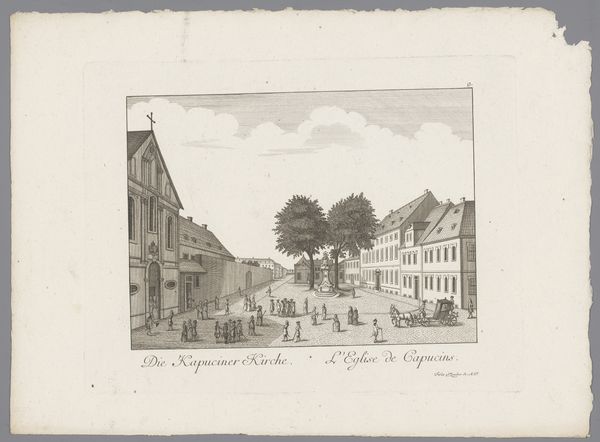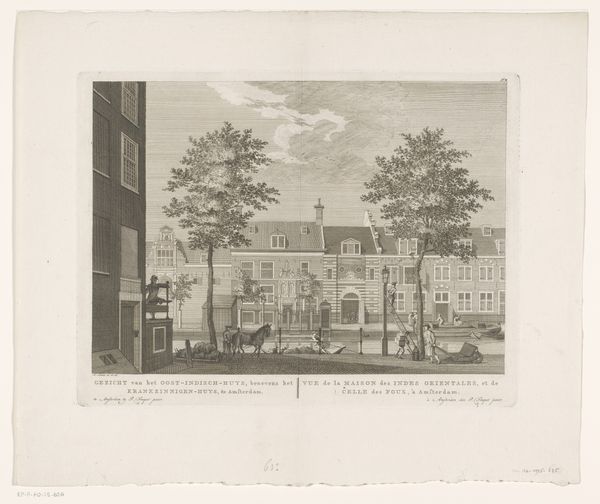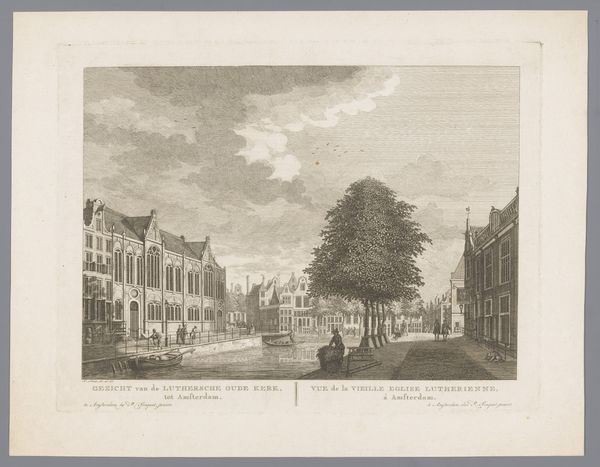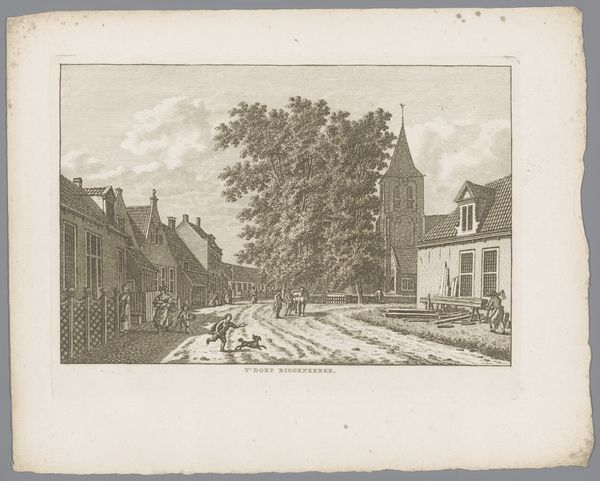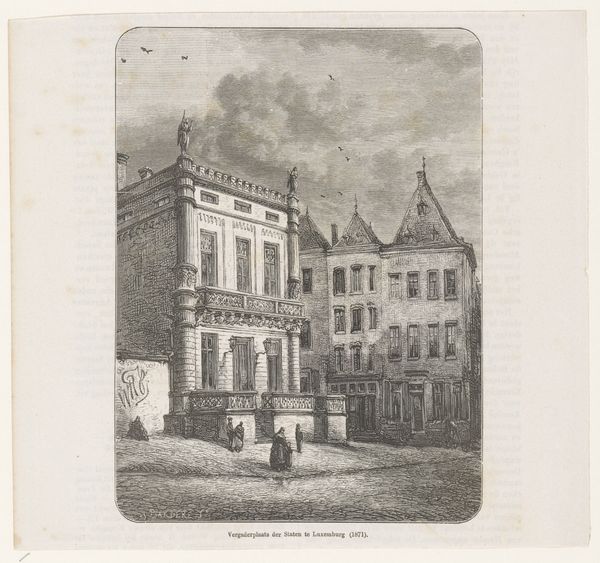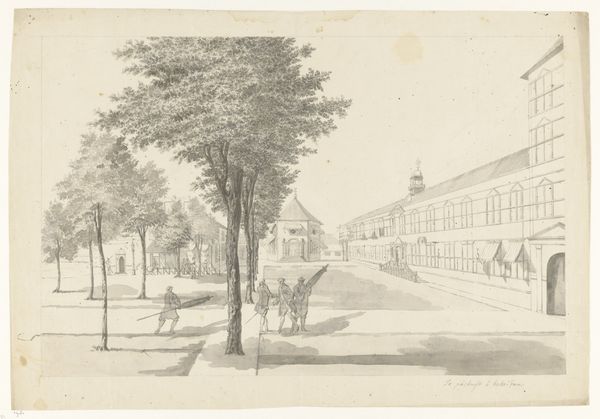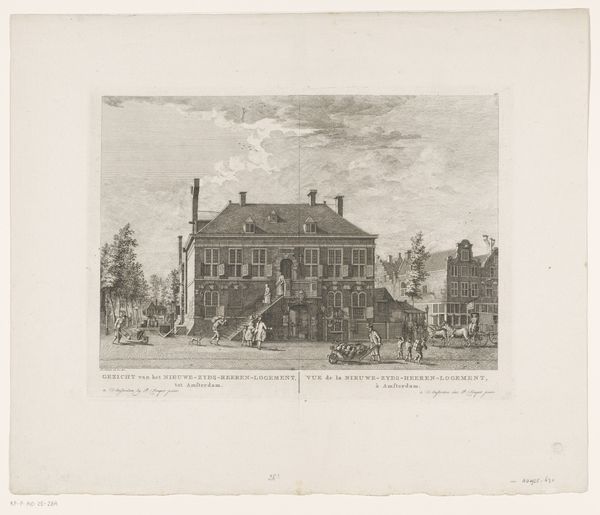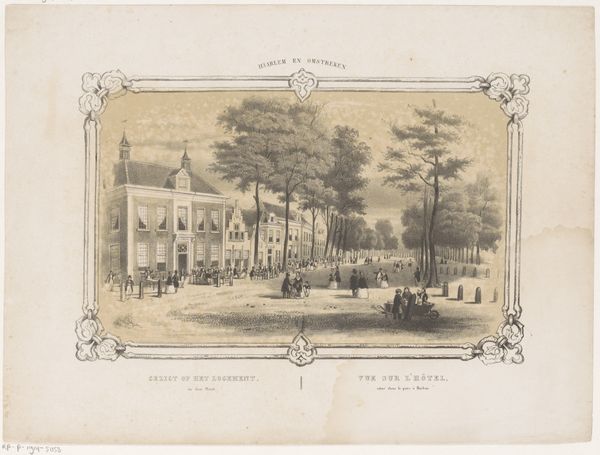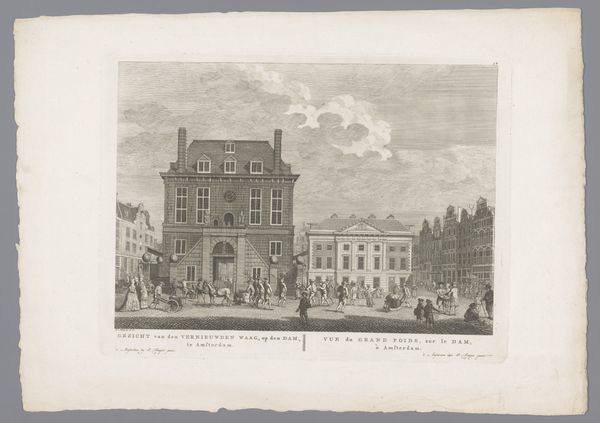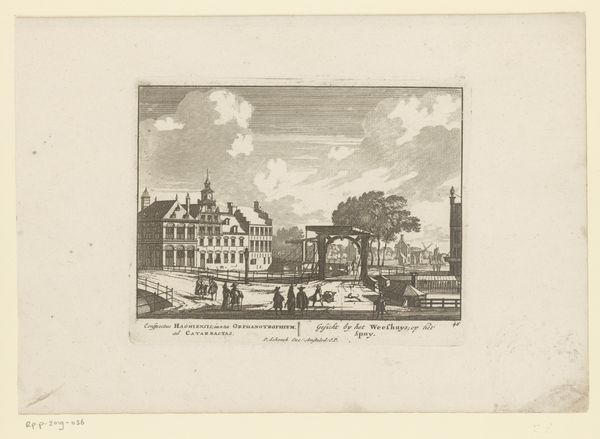
drawing, print, etching, paper, pen, engraving
#
drawing
# print
#
etching
#
paper
#
pen
#
cityscape
#
genre-painting
#
street
#
engraving
#
realism
Dimensions: height 262 mm, width 340 mm
Copyright: Rijks Museum: Open Domain
Curator: Welcome. Today, we're looking at Hendrik Wilhelmus Last’s "Straat in Scheveningen," an etching created sometime between 1827 and 1873 and currently held in the Rijksmuseum collection. Editor: My first impression is the incredible stillness and intricacy captured in monochrome. The detail in the architecture and figures is quite captivating. Curator: Indeed. Observe how Last uses lines and cross-hatching to create tonal variations, establishing spatial depth within a flattened plane. The composition is structured along a central perspective, pulling the viewer into the street itself. Editor: And think about the laborious process involved: etching each line onto the metal plate, the meticulous crafting, the almost endless duplication. It's fascinating to consider the cultural context of prints at this time—making images like this accessible to a wider audience. Were they primarily decorative or documentary, I wonder? Curator: Functionally, the print offered a form of documentation, reflecting Realism's interest in depicting everyday life. Notice the figures: rendered as archetypes within a carefully structured composition, each carefully positioned, a formal organization typical for its period. Editor: These prints speak to the democratization of art through accessible techniques. One can almost sense the sounds and textures of 19th-century Scheveningen – the clatter of horses, the rough feel of the cobblestones, the daily grind made into art, accessible on paper. Curator: I would further suggest that the artwork functions as more than just documentation. Last’s use of visual organization gives it an enduring quality—revealing a deliberate aesthetic intention within its structured form. Editor: Absolutely. And beyond aesthetics, understanding the social and material context allows us to consider how prints like these helped shape perceptions of place and contributed to the circulation of visual knowledge at that time. It’s not only about the image itself, but also its function. Curator: A fruitful observation! Considering the technical finesse and the formal choices made by Last, we appreciate "Straat in Scheveningen" as more than a historical record—but a statement of enduring aesthetic strength. Editor: Agreed. Examining the materiality and production enriches our view and reminds us of the art as tangible evidence of both daily life and how we depict it.
Comments
No comments
Be the first to comment and join the conversation on the ultimate creative platform.
